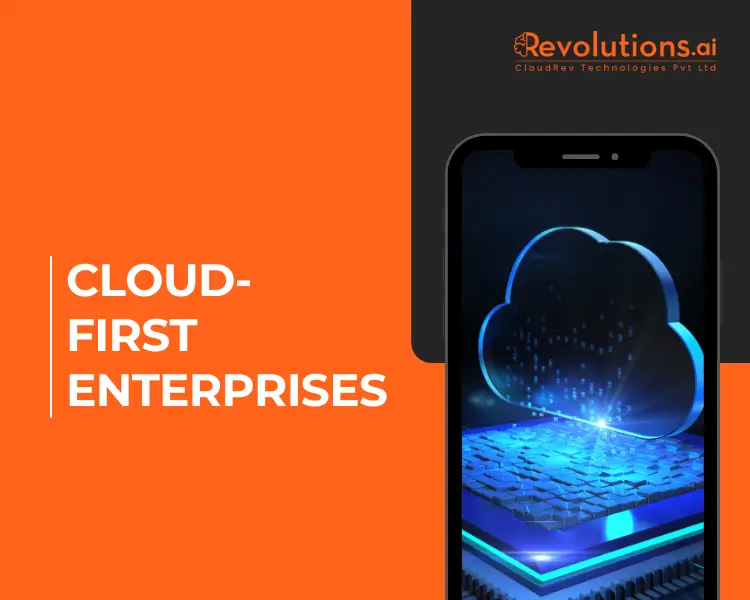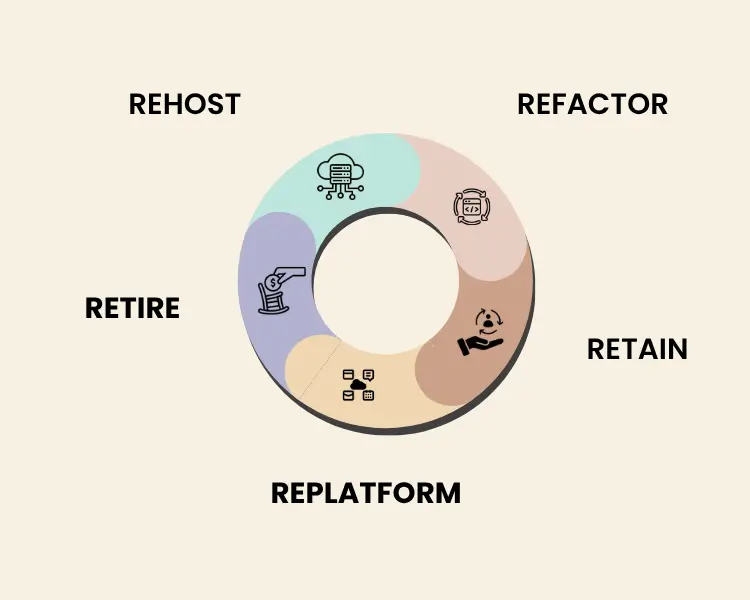Considering taking your business to the cloud, but not sure how to begin? You’re not alone. For many Cloud-First Enterprises, cloud migration can feel daunting—especially when existing systems are rooted in legacy infrastructure. But with the right cloud migration strategies, you can transition with purpose, speed, and far less disruption than you might expect.
We are in a cloud-first age in which agility is no longer a nice-to-have, it’s a differentiator. But plunging into the cloud without a strategic approach is like building a house without plans. Also, moving and changing is not simply about relocating data; it’s about rethinking how your business operates, partners, and evolves. The path may vary from each organisation, but the destination is the same: resilience, velocity, and future-proofing.
Here in this blog, we’ll take you through what an assured cloud migration is from determining readiness to choosing the proper tools, partners, and practices. Whether you’re a high-growth startup or a large enterprise looking to break free from on-premises systems, these learnings will allow you to migrate smarter, not harder. Let’s get started.
Why is Cloud Adoption Growing Faster Across Industries?
Across industries, organisations are turning to cloud solutions not only to update IT, but to change how they operate and expand. The conventional infrastructure models are being overshadowed by fast-changing market forces, remote working conditions, and customer demands. Also, enterprises must grow faster, leaner, and innovate perpetually.
Choosing a cloud-first approach allows businesses to shift from reactive IT paradigms to proactive innovation. It gives them on-demand access to elastic computing power, advanced analysis, and tools that allow agile workflows. This agility is essential in industries like healthcare, finance, retail, and manufacturing, where real-time insights and responsiveness drive market relevancy.
By removing the necessity for large initial capital outlays and minimizing maintenance overhead, businesses can free up funds for more strategic projects. Additionally, the cloud supports teamwork among dispersed teams, quicker deployment cycles, and incorporates new technologies smoothly, delivering a competitive advantage over the long haul.
What are the Primary Types of Cloud Migration Strategies?
Enterprises usually follow one of the various migration strategies depending on goals, timeframes, and available infrastructure. These strategies present an organised means to modernisation and are frequently supported by a trusted partner providing enterprise cloud solutions.
1. Rehost (Lift-and-Shift)
This method entails shifting applications to the cloud with little or no changes. It’s quick and inexpensive, particularly for companies that need to leave behind legacy data centers in a hurry. Nevertheless, it fails to take full advantage of cloud-native capabilities.
2. Replatform (Lift-Tinker-and-Shift)
In this, applications are partly changed to maximize performance in the cloud without a complete architectural redesign. This may include migrating to managed databases or services for refined scalability and less hands-on maintenance.
3. Refactor (Re-architect)
Applications are redesigned from scratch to be cloud-native in this approach. While time-consuming, it provides superior performance, flexibility, and closer alignment with long-term digital transformation objectives.
4. Retire
Outdated, no-longer-valuable, or redundant applications are phased out. This reduces complexity, saves costs, and prevents the migration of redundant workloads to the cloud.
5. Retain
Some applications can stay on-premises owing to regulatory needs or technical limitations. These are incorporated subsequently as part of a hybrid cloud setup.
How Can Data Security Be Ensured Throughout the Migration Process?
Security is a fundamental issue when transferring confidential information and company activities into the cloud. However, there has to be a clearly established strategy constructed around end-to-end security, whereby data in transit will be encrypted by strong industry standards. Identity and access management (IAM) must be strong enough to provide accurate control of who has access to what, and under what circumstances.
In addition to encryption and access controls, organisations need to have continuous monitoring and threat detection in place. Also, security in the process, commonly known as “shift-left security,” detects vulnerabilities ahead of time.
Furthermore, successful security through cloud migration is not a matter of tools, but of change. Additonally, adopting application modernization typically makes the system more secure by departing from legacy software and isolated data patterns. However, the cloud-native applications are now designed securely from the ground up by providing microservices architecture, containerisation, and self-updating capabilities that minimise the attack surface.
Why is Compliance Considered Non-Negotiable for Businesses Operating in Regulated Sectors?
Compliance is not negotiable for businesses working within regulated sectors or working with sensitive information. With growing cloud adoption comes increased regulatory scrutiny. Also, compliance with legal and industry standards is essential in preventing risk and penalties. Regulations such as GDPR, HIPAA, SOC 2, and ISO/IEC 27001 establish the standard against which data has to be treated, processed, and secured.
Complexity ensues when organisations work across geographies. With each geography having different compliance requirements. An integrated compliance strategy also tied to cloud migration strategies that further allows responding quickly to these challenges. Also, care must be taken to choose transparent cloud providers and detailed audit logs.
Apart from regulatory controls outside, internal rule compliance is also a crucial factor. However, clear data classification, retention, and access policies ensure continuous compliance. Further, policy enforcement can even be automated in an effort to simplify control, and enterprises can use tools to track and report their real-time compliance status.
What Does a Future-Proof Cloud Environment Look Like?
A future-proofed environment is responsive, insightful, and secure, designed for current performance as well as long-term innovation. It is aligned to the organisation’s growth strategy and driven by a strong cloud roadmap that delivers strategic phased deployment.
- Scalability at Core – Designed to scale seamlessly, supporting user growth, workload increase, and demand surges without performance degradation.
- Hybrid and Multi-Cloud Capabilities – Allows effortless integration among public, private, and multiple cloud providers, eliminating vendor lock-in and promoting flexibility.
- Automation and AIOps Integration – Includes intelligent automation for provisioning, scaling, and monitoring, minimising manual overhead and refining compatibility.
- Real-time Security Monitoring – Addresses ongoing security audits, identity management, and real-time alerts to provide an active security stance.
- Developer-Centric Tools – Teams with CI/CD pipelines, container orchestration, and cloud-native development tools to achieve accelerated innovation cycles.
- Built-In Compliance Frameworks – Provides tools and documentation to conform to industry-specific standards and facilitates easier audits and reporting processes.
Conclusion
Successful migration is not necessarily about technology; it’s about planning, strategy, and execution. Proper cloud migration strategies even allow organisations to future-proof their infrastructure, become more agile, and liberate innovation. By learning about migration models, solving security issues, and following compliance, businesses can make the move to a smarter way of working confidently.
At the core of this journey is the requirement for expert leadership. That’s where Revolution AI comes in. As a trusted cloud transformation partner, we guide companies through complexity, simplify adoption, and design scalable environments for tomorrow. Also, migrating legacy systems or starting greenfield projects, we focus on constructing resilient, cloud-first businesses
Frequently Asked Questions
The most effective migration strategies include rehosting, replatforming, refactoring, retiring, and retaining. The right choice depends on existing infrastructure, business goals, and long-term digital transformation plans.
Timelines vary based on the complexity and size of the infrastructure. A phased approach using structured cloud migration strategies can range from a few weeks for simple workloads to several months for full-scale enterprise migration.
Yes, with the right planning, tools, and a trusted cloud migration partner, enterprises can minimize or eliminate downtime. Using automation, data replication, and testing ensures seamless transitions with little to no disruption.
Risks include data breaches, misconfigured services, and inadequate access controls. Implementing strong encryption, identity management, and continuous monitoring helps secure data during and after migration.
Hybrid and multi-cloud strategies provide flexibility, reduce vendor lock-in, and support gradual modernisation. They allow organisations to choose best-of-breed services while maintaining compliance and operational continuity.

Ankit Sharma
Ankit Sharma specializes in SEO and content marketing for SaaS and eCommerce brands, turning search visibility into real business growth....read more




